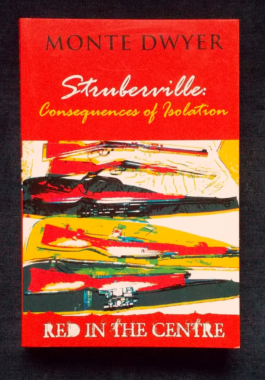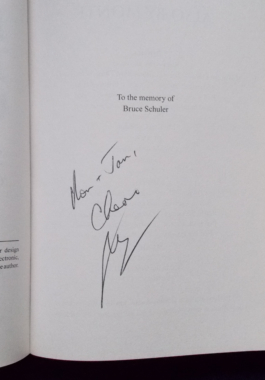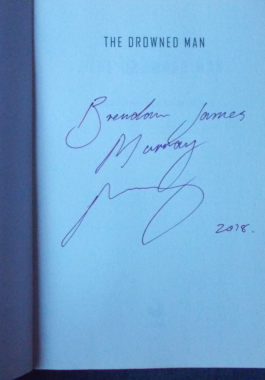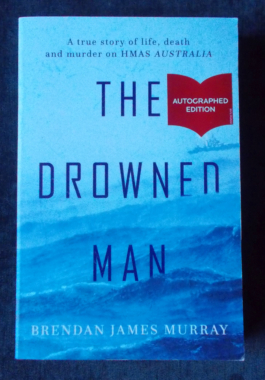-
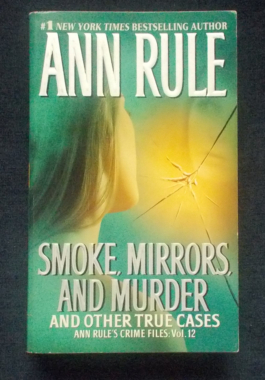 In some murder cases, the truth behind the most tragic of crimes crystallizes with relative ease. Not so with these fascinating accounts drawn from the personal files of Ann Rule, America's bestselling true-crime writer. What happens when the case itself becomes an intractable puzzle, when clues are shrouded in smoke and mirrors, and when criminals skillfully evade law enforcement in a maddening cat-and-mouse chase? An ideal family is targeted for death by the least likely enemy, who plotted their demise from behind bars.... A sexual predator hides behind multiple fake identities, eluding police for years while his past victims live in fear that he will hunt them down.... A modest preacher's wife confesses to shooting her husband after an argument -- but there's more to her shattering story than meets the eye - and more. Illustrated with black and white photographs.
In some murder cases, the truth behind the most tragic of crimes crystallizes with relative ease. Not so with these fascinating accounts drawn from the personal files of Ann Rule, America's bestselling true-crime writer. What happens when the case itself becomes an intractable puzzle, when clues are shrouded in smoke and mirrors, and when criminals skillfully evade law enforcement in a maddening cat-and-mouse chase? An ideal family is targeted for death by the least likely enemy, who plotted their demise from behind bars.... A sexual predator hides behind multiple fake identities, eluding police for years while his past victims live in fear that he will hunt them down.... A modest preacher's wife confesses to shooting her husband after an argument -- but there's more to her shattering story than meets the eye - and more. Illustrated with black and white photographs. -
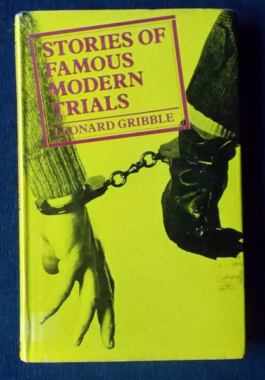 With such intriguing chapters as: The Riddle of the Bordereau (the Dreyfus case); Murder in High Society (the murder of Stanford White and the affair of Evelyn Stanford nee Nesbit and Harry Thaw) ; the Tragedy of Oscar Slater (the murder of Marion Gilchrist); The Original Winslow Boy (the tragedy caused by the theft of a five shilling postal order); A Matter of High Treason (Roger Casement); The Green Bicycle Mystery (the murder of Bella Wright) ; Buccaneer in Morning Coat (Horatio Bottomley, swindler par excellence) ; The Incredible Fire Raisers (the Leopold Harris arson gang) ; Justice Comes To Nuremburg; The Double Betrayal (the case of Klaus Fuchs); Teenagers On A Roof (the thrill-killing of a police man in London, 1952) ; The Great Train Robbers.
With such intriguing chapters as: The Riddle of the Bordereau (the Dreyfus case); Murder in High Society (the murder of Stanford White and the affair of Evelyn Stanford nee Nesbit and Harry Thaw) ; the Tragedy of Oscar Slater (the murder of Marion Gilchrist); The Original Winslow Boy (the tragedy caused by the theft of a five shilling postal order); A Matter of High Treason (Roger Casement); The Green Bicycle Mystery (the murder of Bella Wright) ; Buccaneer in Morning Coat (Horatio Bottomley, swindler par excellence) ; The Incredible Fire Raisers (the Leopold Harris arson gang) ; Justice Comes To Nuremburg; The Double Betrayal (the case of Klaus Fuchs); Teenagers On A Roof (the thrill-killing of a police man in London, 1952) ; The Great Train Robbers. -
 The criminals who ended their days in Strangeways Prison - and the crimes that sent them there. A collection of murder cases from around Manchester each of which ends in the accused being executed at Strangeways Prison. Some of the accounts, at the end, feature an author's note in which suggests that perhaps the accused was innocent and should not have been hanged...Many a lot of these crimes are particularly shocking, evil and unmotivated. There is also a first-hand account written by Charles Parton, who was sentenced to death for murder and served 11 years before being found not guilty.
The criminals who ended their days in Strangeways Prison - and the crimes that sent them there. A collection of murder cases from around Manchester each of which ends in the accused being executed at Strangeways Prison. Some of the accounts, at the end, feature an author's note in which suggests that perhaps the accused was innocent and should not have been hanged...Many a lot of these crimes are particularly shocking, evil and unmotivated. There is also a first-hand account written by Charles Parton, who was sentenced to death for murder and served 11 years before being found not guilty. -

The Butchers: Brian Lane
$6.00What is the most effective way to dispose of a troublesome corpse? Eat it? Dip it in a vat of acid? Feed it to the pigs - or turn it into sausages? Just pop it in a furnace, maybe...? There's more than thirty cases here: from Catherine Hayes who set a trend in dismemberment in 1726 when she hacked off her husband's head and tossed it into the Thames, to Dennis Nilson who was doing much the same to his victims in 1983; from Marcel Petiot's quicklime pits in Occupied Paris, to New York's infamous Albert 'The Cannibal' Fish. Yet however meticulous and ingenious, none of them got away with it - painstaking investigation and forensics led to the final unmasking of the sadists and psychotics who sought such bloody concealment of their crimes. With black and white photographs. -
 Discover surprising answers in this true-crime treasury of 100 of the most fascinating cases of all time. More than two centuries in the development of modern forensic procedures come to vivid life as everything from handwriting analyses and voiceprints to ballistics, DNA testing and psychological profiles reveal who did it - and, in some startling cases, who didn't do it. Categories: Ballistics; Cause Of Death; Disputed Documents; DNA Typing; Explosives And Fire; Fingerprinting; Forensic Anthropology; Odontology; Psychological Profiling; Identification Of Remains; Serology; Time Of Death; Trace Evidence; Voice Printing. The cases detailed herein range from the 189os to the 1990s. Illustrated with black and white photographs.
Discover surprising answers in this true-crime treasury of 100 of the most fascinating cases of all time. More than two centuries in the development of modern forensic procedures come to vivid life as everything from handwriting analyses and voiceprints to ballistics, DNA testing and psychological profiles reveal who did it - and, in some startling cases, who didn't do it. Categories: Ballistics; Cause Of Death; Disputed Documents; DNA Typing; Explosives And Fire; Fingerprinting; Forensic Anthropology; Odontology; Psychological Profiling; Identification Of Remains; Serology; Time Of Death; Trace Evidence; Voice Printing. The cases detailed herein range from the 189os to the 1990s. Illustrated with black and white photographs. -
 Australia has had its fair share of murders - the grisly, the macabre, the humdrum, the unsolved and the controversial. Men have been hanged who perhaps should never have been convicted; men have gone free who perhaps should have been found guilty. Just the chapter headings alone are enough to entice the reader: The Crimson Feather; Roadside Nightmare - the murder of a courting couple by William Moxley; The Pyjama Girl case, still unsolved to this day; The Walking Corpse ( dubbed the 'Mutilator Murders') and more.
Australia has had its fair share of murders - the grisly, the macabre, the humdrum, the unsolved and the controversial. Men have been hanged who perhaps should never have been convicted; men have gone free who perhaps should have been found guilty. Just the chapter headings alone are enough to entice the reader: The Crimson Feather; Roadside Nightmare - the murder of a courting couple by William Moxley; The Pyjama Girl case, still unsolved to this day; The Walking Corpse ( dubbed the 'Mutilator Murders') and more. -
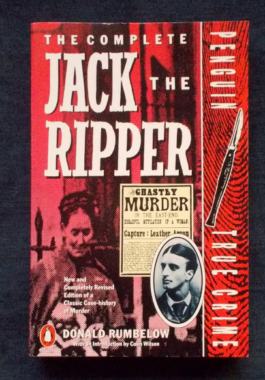 With the advantage of access to some of Scotland Yard's most confidential papers, Donald Rumbelow lays out all the evidence in the most comprehensive summary ever written about the Ripper. Rumbelow, a former London Metropolitan policeman, and an authority on crime, has subjected every theory – including those that have emerged in recent years – to the same deep scrutiny. He also examines the mythology surrounding the case and provides some fascinating insights into the portrayal of the Ripper on stage and screen and on the printed page. More seriously, he also examines the horrifying parallel crimes of the Düsseldorf Ripper and the Yorkshire Ripper in an attempt to throw further light on the atrocities of Victorian London.
With the advantage of access to some of Scotland Yard's most confidential papers, Donald Rumbelow lays out all the evidence in the most comprehensive summary ever written about the Ripper. Rumbelow, a former London Metropolitan policeman, and an authority on crime, has subjected every theory – including those that have emerged in recent years – to the same deep scrutiny. He also examines the mythology surrounding the case and provides some fascinating insights into the portrayal of the Ripper on stage and screen and on the printed page. More seriously, he also examines the horrifying parallel crimes of the Düsseldorf Ripper and the Yorkshire Ripper in an attempt to throw further light on the atrocities of Victorian London.



